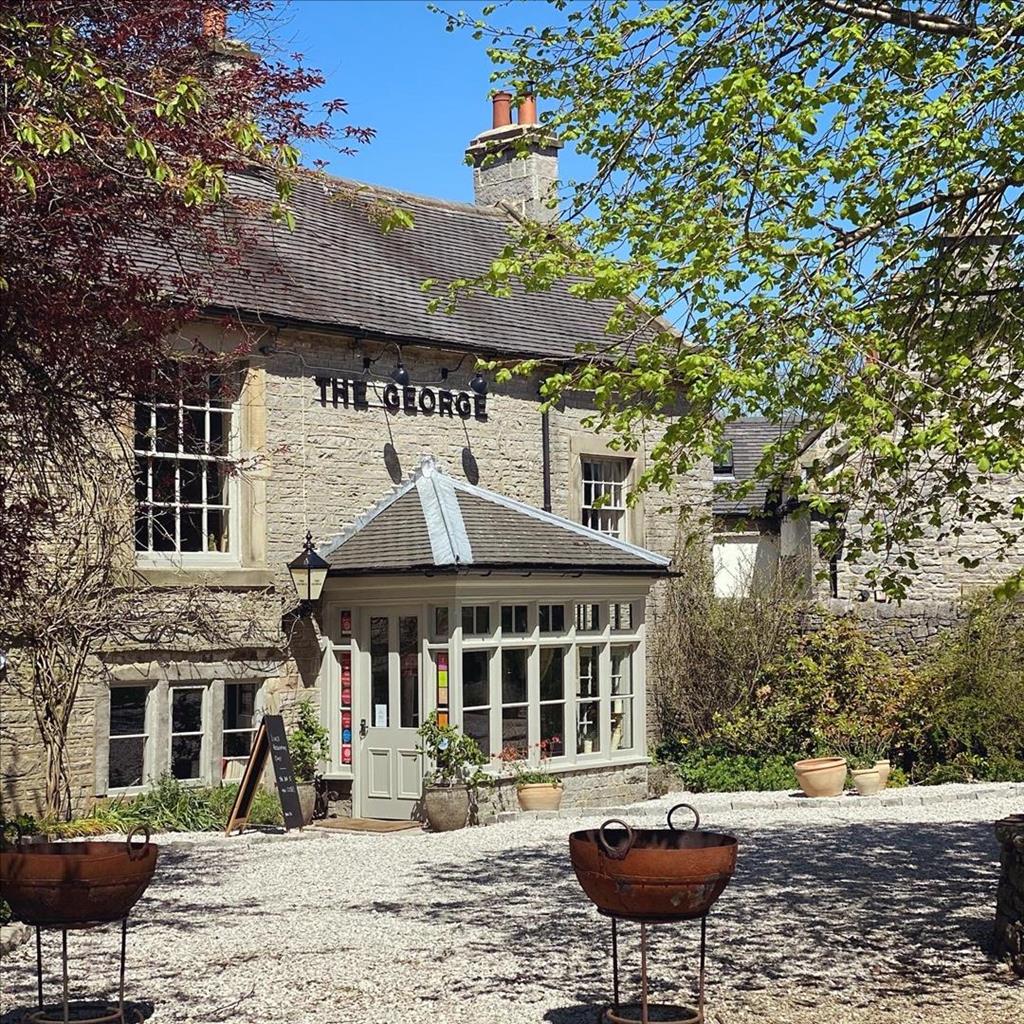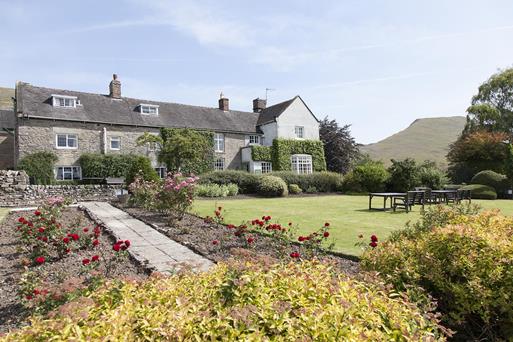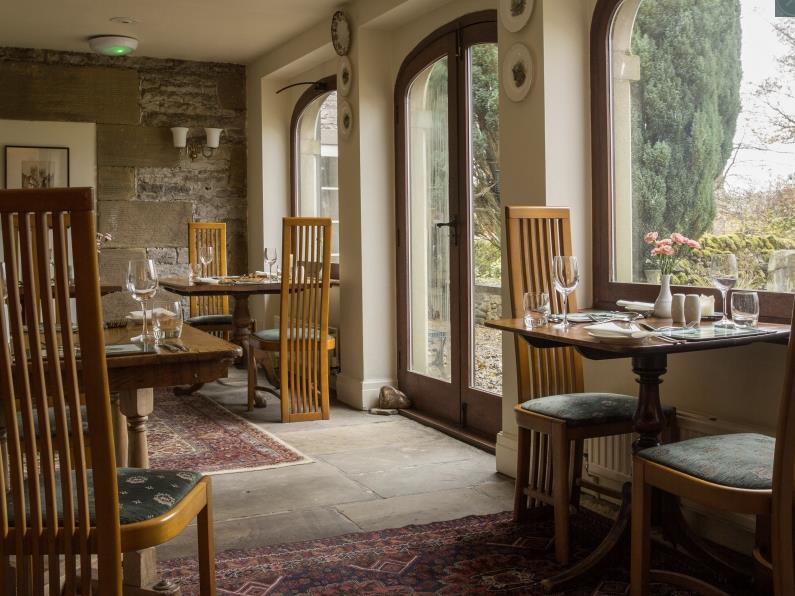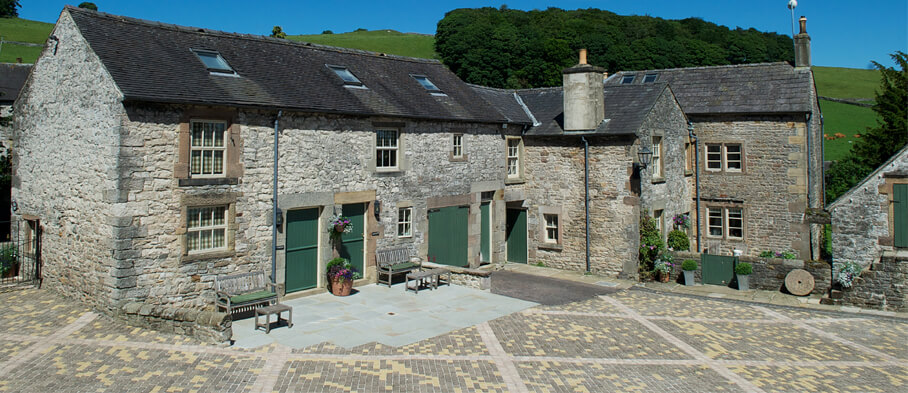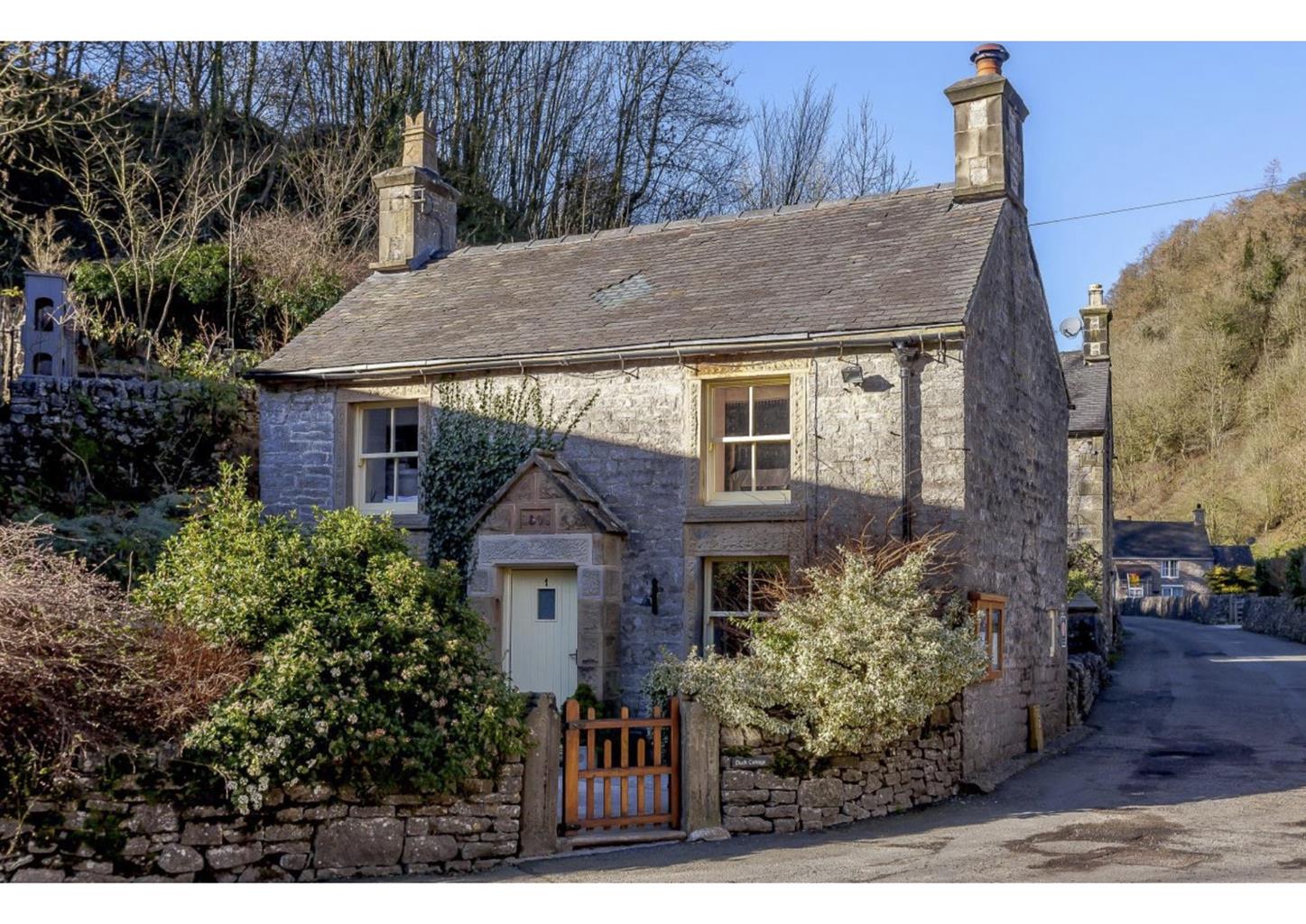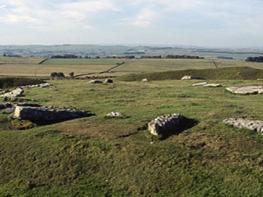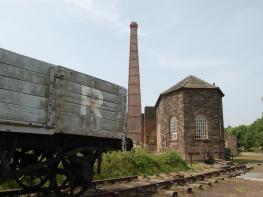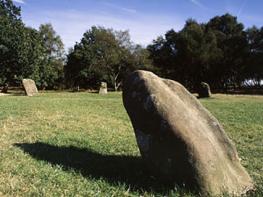Church Farm Cottages is made up of Pinster Cottage, and the slightly larger Winnets Cottage. The…
Wolfscote Dale and Biggin Dale

Following beautiful limestone valleys then an easy return along the Tissington Trail
8 miles (12.9kms)
About the walk
From its source, on Axe Edge, to Hartington, the River Dove is little more than a stream flowing past the Dragon’s Back at Chrome Hill, and in an attractive but shallow valley south of Crowdecote. But once through the pretty woodlands of Beresford Dale it cuts a deep limestone canyon with cliffs and tors almost equal to those of the more celebrated Dovedale. This canyon is Wolfscote Dale, and it’s wilder and more unspoiled than Dovedale, with narrower, less populated paths, and less woodland to hide the crags. Weirs have been constructed along the river that attract trout and grayling to linger.
Early remains
There are several small caves high up amid the soaring limestone peaks along this stretch of the Dove. Formed by the effects of water, which gouged out the rock as the glaciers melted in the latter stages of the last Ice Age, they would have offered shelter for early hunters and later some of them were used as tombs for family and tribal members. A few, such as Reynard’s Cave further downstream, have yielded various artefacts.
Wolfscote Dale
The path up Wolfscote Dale begins at Lode Mill. The whole of Wolfscote and Biggin Dales are part of the Dove Valley National Nature Reserve, known for its many species of limestone-loving plants and its butterflies. The river, verged by lush vegetation, has cut a deep and twisting valley through the limestone. The slopes are thickly wooded with ash, sycamore and alder. Further north this woodland thins out to reveal more of the crags, and a ravine opens out to the right of Coldeaton Bridge. The dale, like so many in Derbyshire, is rich in wildlife. The dale divides again beneath the magnificent Peaseland Rocks. Biggin Dale follows, and for most of the year it’s a dry valley, but in winter the rocky path may be jostling for room with a newly surfaced stream. It’s a narrow dale with limestone screes and scrub gorse. What looks like a natural cave over a stile to the right is in fact the entrance to an old lead mine. At the top of the dale you come to Biggin, a straggling village, from where the return route is an easy-paced one using the Tissington Trail, which ambles over the high plains of Alsop Moor.
Walk directions
From the car park, carefully cross the busy A515 road and follow the lane opposite signed to Mill Dale.
Go right at a junction, and follow the lane down to the bridge at Lode Mill. (If the road is particularly popular, as sometimes happens in summer, part-way down on the left there’s an alternative road-avoiding path. However it’s narrow and sometimes overgrown so the road is best when clear.) Turn right just before the bridge and to the path running alongside the river.
Stay on the path beside the river at both a shuttered building and Coldeaton Bridge, continuing beneath thickly wooded slopes on the right. Beyond Gypsy Bridge and a squeeze stile, the woods cease and the dale becomes bare and rock-fringed, overlooked by the bold pinnacles of Peaseland Rocks ahead.
Go through a gate in the wall and immediately turn right, up the dry valley of Biggin Dale, and continue beneath steep gorse-covered limestone banks and screes, passing through a gate into woodland.
Where the dale broadens out and divides there’s a path junction with a concrete dew pond over the wall on the left. Turn left, signposted ‘Hartington’, and once through a gate swing right following the valley waymarkers.
At the next junction of paths, stay with the valley as it bends right at a wall, following the path to Biggin. Pass an unusual small reed-bed water treatment works then climb out of the dale to reach the road at Dale End.
Turn right along the road for a few paces then bear left, following a road past the Waterloo Inn and through Biggin village.
Continue up the road to the old railway bridge where you join the Tissington Trail. Follow this old trackbed southwards across the pastures of Biggin and Alport Moors. After 3 miles (4.8km) you reach the car park at the former Alsop Station.
Additional information
Generally well-defined paths, although the limestone dale can be slippery after rain
Partially wooded limestone dales and high pasture
On lead in dales (nature reserve); under close control elsewhere – avoid long stretchy leads on trail to prevent tripping other users
OS Explorer OL24 Peak District – White Peak Area
Alsop Station pay car park
None on route
WALKING IN SAFETY
Read our tips to look after yourself and the environment when following this walk.
Find out more
Also in the area
About the area
Discover Derbyshire
The natural features of this central English county range from the modest heights of the Peak District National Park, where Kinder Scout stands at 2,088 ft (636 m), to the depths of its remarkable underground caverns, floodlit to reveal exquisite Blue John stone. Walkers and cyclists will enjoy the High Peak Trail which extends from the Derwent Valley to the limestone plateau near Buxton, and for many, the spectacular scenery is what draws them to the area.
The county is well endowed with stately homes – most notably Chatsworth, the palatial home of the Duke and Duchess of Devonshire, with its outstanding collections of paintings, statuary and art. Other gems include the well preserved medieval Haddon Hall, the Elizabethan Hardwick Hall, and Kedleston Hall, whose entrance front has been described as the grandest Palladian façade in Britain.
The spa town of Matlock is the county’s administrative centre and other major towns of interest include Derby and the old coal mining town of Chesterfield, with its crooked spire. Around the villages of Derbyshire, look out for the ancient tradition of well dressing, the decorating of springs and wells – the precious sources of life-sustaining water – with pictures formed from flowers.
Nearby stays
Restaurants and Pubs
Nearby experiences
Recommended things to do
Why choose Rated Trips?
Your trusted guide to rated places across the UK
The best coverage
Discover more than 15,000 professionally rated places to stay, eat and visit from across the UK and Ireland.
Quality assured
Choose a place to stay safe in the knowledge that it has been expertly assessed by trained assessors.
Plan your next trip
Search by location or the type of place you're visiting to find your next ideal holiday experience.
Travel inspiration
Read our articles, city guides and recommended things to do for inspiration. We're here to help you explore the UK.


